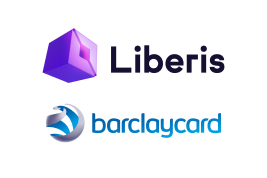In this blog, Tito Sarrionandia explains how Liberis leverages AI and deep data insights to transform financing for small businesses, surpassing traditional lending limitations.
The blog discusses how artificial intelligence is changing the embedded finance landscape by providing tailored experiences, streamlined customer experiences, test data for training models, and transparency.
Discover how sustainable lending empowers small businesses to thrive responsibly, funding eco-friendly projects that build trust with ethically minded customers.
This blog explores how traditional banks are revolutionising customer experience by collaborating with embedded finance platforms, which seamlessly integrate innovative financial services within non-financial companies' products or services, enhancing convenience, personalisation, accessibility, and security while streamlining financial transactions and improving financial education.
Discover how 4-click funding revolutionizes e-commerce platforms, empowering merchants with instant, personalized access to vital funds while ensuring convenience, transparency, and security.
See how Liberis leverages over 17 years of data to offer tailored financing and actionable insights, driving business growth and innovation for small and medium-sized enterprises.
Insights from Google, Liberis, and Teya on how GenAI is revolutionising business operations, enhancing productivity, and improving customer experiences through advanced AI integration and innovative solutions.
Shaun Johnson, Senior Collections Agent at Liberis shares what a 'day in the life' looks like.
Felicity Crudge, Customer Feedback Associate at Liberis shares what a 'day in the life' looks like.

A monthly digest of industry news, articles, and updates
Embedded finance is a big change to the fintech world. It has completely changed the way we think about financial services. It’s so popular that you’ve probably used it before, even if you don’t know it.
Embedded finance is a new way to provide financial services. It uses technology to connect financial products, like payments, loans, and deposits, to non-financial platforms, like company websites and mobile apps. This makes it easier and cheaper for merchants and brands to offer financial services to their customers.
The rise of embedded finance has been made possible by three big changes in the business world:
These three forces are working together to create embedded finance services that can strengthen brand loyalty, increase customer retention, boost conversion rates, and generate repeat business. And the growth is amazing: the global embedded finance market is expected to grow from $264 billion in 2021 to $606 billion in 2025.
Another technological development that’s fuelling this unstoppable growth is artificial intelligence (AI).
The rise of AI has turbocharged the intersection of finance and technology. AI is constantly changing, which makes it possible to create embedded user experiences that are more and more intuitive, natural, and engaging. And the benefits are clear:
AI algorithms allow embedded finance platforms to personalise user experiences by analysing huge amounts of data in real time. This helps them to understand customer preferences, behaviours, and patterns, and to tailor financial services, such as loans, accordingly.
For example, AI-powered credit scoring models use machine learning to analyse non-traditional factors, such as reviews, to offer terms and conditions that are tailored to an applicant’s unique financial situation.
Embedded finance platforms can also use real-time data analysis to offer convenient experiences from start to finish. For example, embedded lending makes the loan application and assessment process easier and faster by delivering a frictionless four-click journey that unlocks funds quickly and cost-effectively once AI has expedited the merchant pre-approval process:
This convenience removes barriers to access to capital, such as old-fashioned lenders, and gives small and medium-sized businesses the point-of-need access to capital they need to manage their cash flow efficiently. Consumers can also access flexible payment structures that improve their online shopping experience.
By simulating user activity patterns and generating scenarios that mimic the characteristics of real-world situations, generative AI can be used to create synthetic test data for training models and evaluating systems. This diverse and representative dataset enables robust testing and development of embedded finance systems and informs decisions.
For example, generative AI is a powerful tool for creating synthetic data that mirrors fraudulent patterns. By training generative AI models on vast datasets containing known instances of fraud, it’s possible to generate data that simulates the characteristics and behaviours of fraudulent activities. This can be harnessed to create realistic scenarios for testing and fine-tuning embedded fraud detection capabilities.
As AI is used more and more in embedded finance, businesses want access to more real-time data to make better decisions. But how accurate is this data? Explainable AI (XAI) is helping to bridge the gap between AI models and user trust in their reliability. XAI is a set of processes and methods that makes AI more explainable, intuitive, and understandable to human users without sacrificing performance or prediction accuracy.
For example, non-financial businesses that offer lending as part of their customer experience are using XAI to make informed creditworthiness decisions directly within their core applications or products. Liberis offers a revenue-based lending model powered by an intelligent data engine that accurately predicts business transaction revenues and makes personalized and pre-approved offers instantly. 78% of businesses receive their funding in less than 48 hours.
AI can constantly learn and adjust, so embedded finance will keep evolving in terms of user experience, transparency, fraud prevention, and accessibility of financial services. The progress that AI has already made will continue to advance as AI learns from experience and applies what it learns.
Generative AI, the technology behind ChatGPT, is taking this to the next level. Generative AI goes beyond traditional AI, which is typically used to analyse data and make predictions, by creating new data. For example, generative AI can be used to create chatbots that can understand the context of a situation and respond accordingly to provide personalised financial advice and support. This is just one example of how AI is making embedded finance more seamless, tailored, and accessible.
From facial recognition and digital voice assistants to social media algorithms and chatbots, artificial intelligence (AI) is embedded in our daily lives. This ability to intersect with and enhance everyday tasks has accelerated its adoption: 35% of companies are using AI in their business, with a further 42% exploring its use – and the financial services sector is leading the charge.
Nowhere is this more evident than in a disruptive sphere of this traditionally clunky sector: embedded finance. This insertion of financial services into nonfinancial platforms, to streamline processes and enhance user experiences, is being elevated by AI throughout every stage of the process – with compelling benefits.
By wedding embedded finance with AI, brands can give their customers exactly what they want: interactions with loans, accounts, and payments that mirror the highly personal and frictionless experiences they enjoy elsewhere online.
To achieve this, AI replaces narrow data sources based on demographics and age with real-time analysis of vast datasets – such as browser history, social interactions, and past purchases – empowering brands to recommend targeted products and services based on customers browsing and buying preferences.
This insight allows them to anticipate their expectations and offer them what they want at the right time as part of an integrated, personalised omnichannel experience – enhancing customer engagement, satisfaction, and loyalty.
The cost-saving potential of integrating AI-powered solutions into embedded finance is multifaceted:
The core aim of embedding financial services directly into non-financial platforms is to make transactions seamless by circumventing fragmented processes that rely on third parties. This innate ability to improve operational efficiency from the moment a customer engages with a brand through to the end of their journey is supercharged by AI.
This transformative technology leverages vast historical and behavioural datasets in real-time to streamline workflows, identify inefficiencies, automate processes, better understand customers, and accelerate and improve decision-making – liberating businesses from siloed data, manual processes, and short-sighted choices.
For example, AI can be used to automatically horizon scan the regulatory landscape for new rules and regulations, or amendments to existing ones. Having replaced potentially harmful manual processes that are prone to human error with automation, it notifies stakeholders and produces performance data that enables preventive action if workflows become, or are at risk of becoming, non-compliant.
Embedded finance, augmented by AI, creates a symbiotic relationship between the innovative platforms that power it and the brands that embrace it, who benefit from a competitive advantage by adding extra layers to their offering – such as personalisation, enhanced credit decisioning, improved security, and robust regulatory compliance.
Take embedded lending, for example. Credit decisioning is a fulcrum of this subset of embedded finance. AI vastly improves credit-approval times and percentages by providing forward-looking insights into an applicant’s suitability to repay a debt obligation in the future and presenting its findings in real-time, rather than depending on historic credit reports.
This comprehensive and expedited approach allows nonfinancial businesses that embed lending into their customer journey to make informed decisions that break down barriers to financial inclusion. For SMEs, this AI-driven decisioning unlocks access to time-critical funds that can mean the difference between survival and ceasing to exist – and can’t be obtained as seamlessly elsewhere.
For example, Liberis offers a revenue-based lending model driven by an intelligent data engine that automatically forecasts business transaction revenues and makes a personalised and preapproved offer instantaneously – with 70% of businesses receiving their funding in less than 48 hours.
These multifaceted advantages of integrating AI into embedded financial services combine to drive increased revenue growth – from personalisation that stimulates repeat business and cross-selling opportunities to accurate credit decisioning that increases the spending power of customers.
Amid the accelerated evolution of this transformative space, it’s estimated that embedded financial services will produce $384.8 billion in revenue by 2029 – almost a 17x increase over the $22.5 billion in revenue generated in 2020. Fuelling this exponential growth is AI and the compelling advantages of its intersection with this new distributed approach to providing financial services.
Embrace the transformative capabilities of embedded finance and AI to enhance customer experiences, reduce costs, boost operational efficiency, and drive market competitiveness.
We’re here to help you navigate the complexities of embedded finance and leverage AI to revolutionise your financial services strategy.
Fill out the form below to discuss our partnership model.
The leaves are falling, the temperature is dropping, and the nights are drawing in, meaning the biggest retail event of the year is around the corner: Black Friday. On 24th November the starting gun is fired on the busy Christmas shopping period when the sale to end all sales gets underway – with millions of deals for everything from tech to teapots.
Credit cards will be primed and shopping lists curated across the land as customers get ready to bag some bargains. But what about the businesses without which none of this would be possible? Christmas presents an opportunity for retailers to cashing in on the seasonal surge. One-quarter of small business owners expect to make more than half of their annual revenue in the final months of the year.
However, this seasonal surge in demand can expose small businesses to potential financial challenges: an increase in returned products, the need for an injection of inventory, rising overheads, and understaffing.
To turn these problems into profit-producing opportunities, it’s important for businesses to lay the foundations for financial stability during this bumper sales period. This requires them to bridge the gap between increased footfall and online activity, with the resources needed to cater for the Christmas rush.
Revenue Finance offers flexible and fast funding during this key business period. This alternative financing model enables small businesses to access funding based solely on their overall business revenue. It allows them to avoid the clunky and restrictive funding services typically offered by traditional lenders.
Getting started is easy, done online in just a couple of clicks. Even better, you’ll receive a decision swiftly and funds could be with you in as little as 24 hours. As for repayments, they’re flexible and tie in with your business’ income from customer transactions.
Empowered by this seamless injection of festive funding, small businesses can plan for a profitable holiday period:
Get access to bespoke, flexible, and speedy funding when they need it most. Approval for funding and repayment processes are primarily based on your total revenue, eliminating the need for complex financial statements and mounting interest. Prepare to turn Christmas into a time of boosting profits, rather than tackling problems.
If you’re a customer of Worldpay, then feel free to get in touch to see if you are eligible for funding.




















We received your details, our teams will be in touch soon.

We received your details, our teams will be in touch soon.




